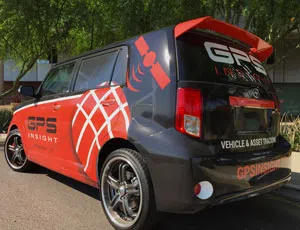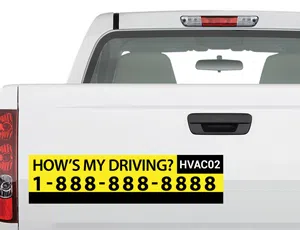A re you trying to hire productive sales representatives who CAN close deals? Not easy ... what you see during a recruitment interview can and often is very, very different from what you observe after they have been a few months on the job.
Worker safety is a high priority. Due to the obvious importance, a lot of time is spent on safety guidelines such as using the best protective gear and leak detectors, requiring additional electrical safety training and coaching technicians on how to properly transport and store chemicals that could pose a serious health threat if handled improperly.
Another important aspect of HVACR safety is how technicians are getting to and from job sites — driver safety. As a mobile workforce, it’s crucial to have the best procedures in place to ensure workers’ safety as they commute in company vehicles.
One of the ways you can enhance driver safety is with fleet management applications such as Telematics.
This software helps management ensure technicians are operating vehicles in accordance with driver policies, monitor driver behavior, coach safer driving habits and keep their vehicles in good working order through advanced maintenance management.
Write Policies Around Safety
Written safety policies have become a best practice and are the foundation of a safety program. Policies should clearly lay out rules for drivers to follow and the consequences for violating them. These might range from coaching to loss of driving privileges to termination.
Drive home the message that safety is a core company value — and that its importance is embraced at every level of the organization, from executives, managers, and supervisors to every driver in the company.
Creating a culture of safety is key to the broader acceptance of the policy.
When writing driver policies, it’s also important to include that Telematics data will be used to measure performance and monitor compliance. When the time comes to hold employees accountable, there could be backlash about tracking their vehicles without their knowledge if it’s not put down in ink.
It’s always advised to talk to employees about the use of Telematics from the start so it’s not a surprise when it’s used to hold them accountable.
Once guidelines have been put in place and technicians have agreed to follow these policies, management can then use Telematics software to monitor that safety regulations are being upheld.
Identify Unsafe Behavior
Your fleet can use Telematics software to notify management when hazardous driving occurs in real-time to prevent accidents, injuries, and fatalities. Telematics offers a wide range of alerts to ensure drivers are operating vehicles safely at all times.
It can be used to monitor speeding, rapid acceleration, quick and harsh stops, and many other behaviors that could be considered dangerous depending on geographic location or weather conditions.
To correct unsafe driver behavior, it’s recommended that fleet managers provide ongoing performance feedback with the data gathered from Telematics.
Alerts allow fleet managers to take action on time-sensitive events like if drivers are speeding, vehicles are moving where or when they shouldn’t be, vehicles are excessively idling, and more.
There are several reports that can provide insight into driver behavior, including the Driver Scorecard Report that rank vehicles based on speeding and rapid acceleration/deceleration.
Scorecard reports rank vehicles and drivers based on speeding, idling, harsh braking, fast acceleration, and other metrics to provide management an overview of driver performance. If you are not using driver scorecards, you could be missing out on a great opportunity to coach drivers on better behavior and create internal incentive programs to help achieve your goals.
By using a flexible platform with customizable reporting options, you won’t just be receiving more reports; you will be receiving more specific reports with the relevant data on which you need to take action.
By sharing this report’s graphical results with employees, they will have a clear understanding of what areas they need to improve to better meet fleet safety regulations.
Maintain Safer Vehicles
According to the National Highway Traffic Safety Administration (NHTSA), 43 percent of critical pre-crash events that cause vehicle accidents are attributed to tire failure. Staying on top of preventative services, like tire rotations, is one of the easiest ways to prevent accidents with Telematics.
The software’s maintenance module will automatically track run time and odometer readings, then send reminders when services like tire rotations and balancing, oil changes, emissions testing, or any other types of services are due to be completed. It is recommended to send maintenance alerts to management and drivers to ensure vehicles and equipment receive necessary services as soon as possible.
Although automated maintenance reminders are effective, a service may still slip through the cracks here and there. To proactively monitor overdue services, management should get in the habit of viewing scheduled maintenance reports. These reports should be available on-demand or can be automated by email on a daily/weekly/monthly basis. Any outstanding services will be flagged in red on the report so managers can ensure they are completed right away.
This Cost of Unsafe Driving
The well-being of workers is a crucial reason to use fleet management applications to enhance safety programs, but there are cost implications as well. There is a clear correlation between unsafe driving and accidents, so it’s no wonder that so many HVACR ?eets are focusing on safety as a key ?eet initiative.
So, how much do accidents really cost employers? According to the Cost of Motor Vehicles Crashes to Employers 2015 Report, between on-the-job crashes and off-the-job crashes, the total is greater than $47 billion across fleets in the United States.
Those costs fall into two categories:
Health fringe bene?t costs — bene?ts paid because of illness and injury of employees and their dependents.
Non-fringe costs — motor vehicle property damage and liability insurance, crash-related legal expenses and the costs of unreimbursed vehicle damage and replacement.
When looking at what each crash costs an employer, it breaks down to approximately $24,000 per on-the-job highway crash, $45,000 per million vehicle-miles of travel, and $68,000 per injury. Assessing just how much dangerous driving impacts the bottom line provides a strong incentive to have this technology in place.
By using Telematics as a safety technology, businesses can correct unsafe driving in real-time, receive tools to coach and provide performance feedback to employees, write new driver policies, and more.
When considering the cost of Telematics vs. the cost per accident, the investment in the technology becomes incredibly worthwhile, as it’s only a fraction of the expense accidents will incur for a business.
By using Telematics to enhance current safety programs, your business will be able to solve specific safety concerns, reduce costs and ensure worker safety while operating company vehicles.





